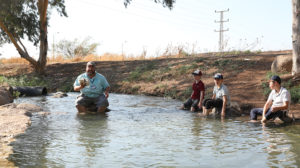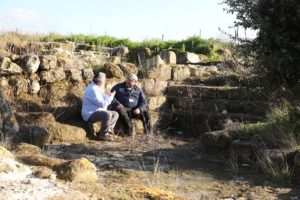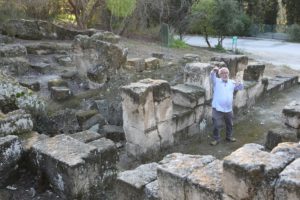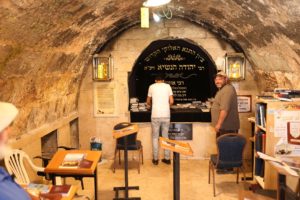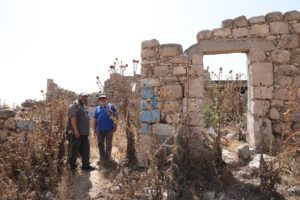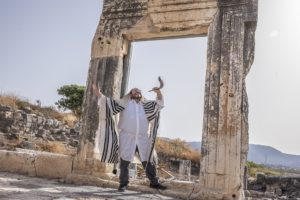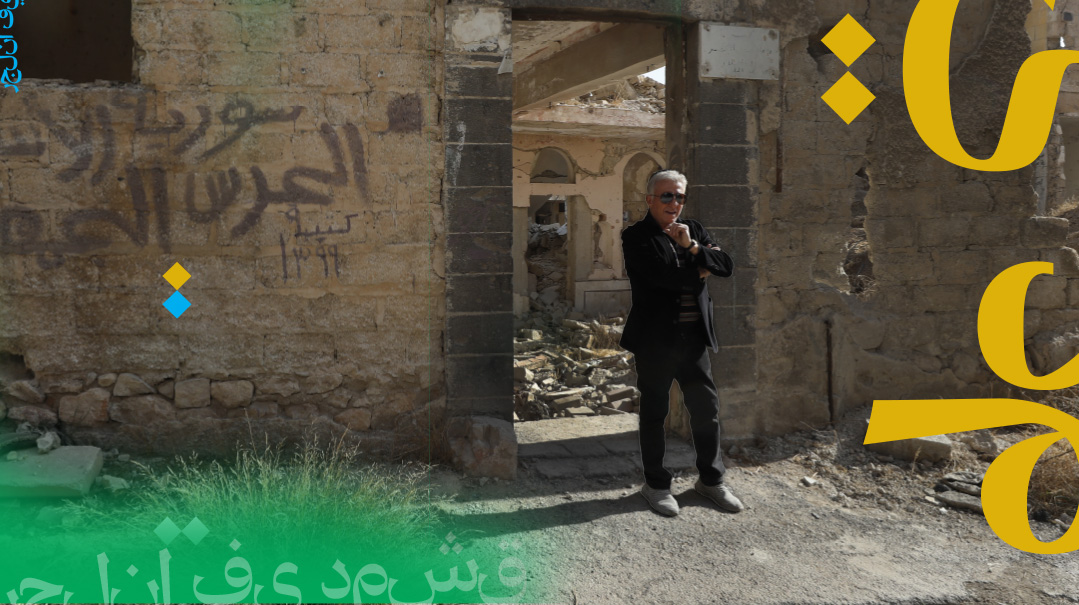Turkish Trail Mix
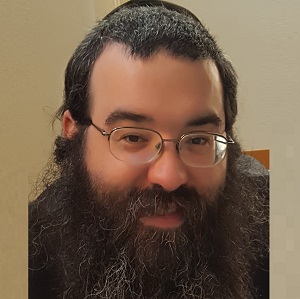
Mile by mile, tweet by tweet, Rabbi Mendy Chitrik traipses through Turkey on the ultimate back-to-roots Jewish journey
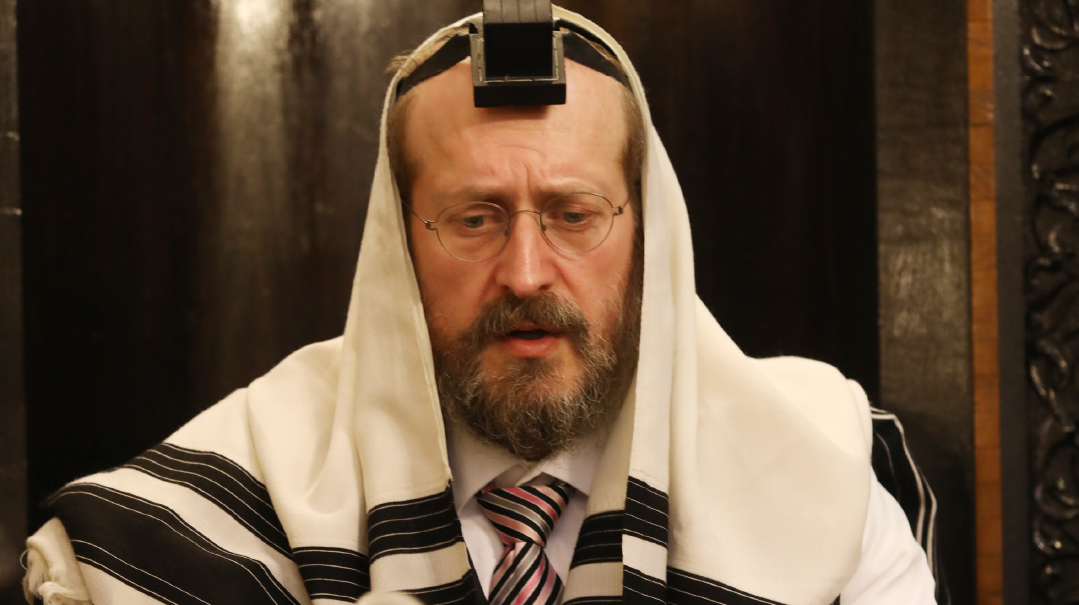
Photos: Rabbi Mendy Chitrik, Family archives
While Avraham Avinu left Charan for Eretz Yisrael at G-d’s command in order to establish the Jewish People, his descendant has returned to that small village in southeast Turkey 3,758 years later for the ultimate in the bein hazmanim road trip.
Turkey has long been the undeveloped land of antiquity, the treasure chest of history that for some reason remains off the list of explorers and pilgrims. It’s the land of Mount Ararat where the Teivah came to its final rest, the place of the well where Yaakov met Rachel, and the site of many Talmudic stories. It’s a country awaiting a publicist. And Rabbi Mendy Chitrik has been spending the past month ably filling that job.
Mile by mile, tweet by tweet, the rabbi of Turkey’s Ashkenazi community has been documenting his discoveries as he nears completion of the month-long road trip through the countryside. One day it’s the village of Netzivin, mentioned in the Gemara as the site of Rabi Yehudah ben Beseira’s famed yeshivah, and then on to ancient familiar names such as Lydia, Antioch, or Cappadocia (Kaputkaya in the Gemara, mentioned in connection to lighting Shabbos candles). Some of these place still have beautiful shuls, others contain an arch rising over an empty field to mark the former site of shul or beis hachayim.
“Turkey has so many historical sites,” said Rabbi Chitrik, a Chabad chassid and Turkey’s Ashkenazic chief rabbi who in 2019 took over the chairmanship of the Alliance of Rabbis in Islamic States, “and many of them have not been excavated. Even a place like Charan was never touched by archaeologists. People still live on top of the hill, with their sheep and ancient style huts. Seeing that really brings you back to the days of Yaakov and Lavan.”
Best of all, his trip is an all-expenses paid one.
While there are only about 15,000 Jews in the country, Turkey is a major supplier of kosher products. There are close to 300 factories in Turkey that produce kosher food, and Rabbi Chitrik oversees the teams of mashgichim for the Orthodox Union, as well as for the Turkish rabbinate’s kashrus department for exports. Turkey is the seventh-largest food and beverage producer in the world, and normally there are several dozen mashgichim in the various plants at any given time, most of them from Israel. Last year however, coronavirus put a stop to outside inspectors, as outside borders were closed and inter-province travel was banned. For many months, mashgichim couldn’t make their rounds, and when the country began to open last summer, Rabbi Chitrik decided to take his 19-year-old son Eliezer with him and travel around the country to inspect the factories so that their kosher certification wouldn’t lapse.
A side goal of those excursions was to investigate the remnants of small Jewish communities and Jewish historic sites that dotted this part of ancient Mesopotamia. And this summer, he decided to make it official.
So after Tishah B’Av, with his family in New York’s Catskills with his wife’s mishpachah, and his son Eliezer home for bein hazmanim, the two again left for the 5,000-mile trip across Turkey. Starting in Istanbul, they’ve made their way southeast, and have now turned around heading back northwest. They take turns driving, and spend the hours of endless road learning, listening to daf yomi shiurim and other recordings.
Rabbi Chitrik visits the factories, and in between goes to check in on far-flung communities. He says he would love to find the kevarim of the 17th-century Knesses Hagedolah (Rav Chaim Benveniste) in Izmir, which was known until about a hundred years ago, and Rav Yaakov Hulu (usually mispronounced as Kuli), the author of the Yalkut Me’am Loez.
(Izmir is perhaps most notoriously famous for false messiah Shabbetai Tzvi’s four-month sojourn there, when the city became a center of Messianic enthusiasm, including festive days of dancing interspersed by days of collective penitence. Whoever opposed the Shabbatean movement was persecuted and some rabbanim had to flee the city. Following Shabbetai Tzvi’s apostasy, it took some time for the Jewish community to regain its balance.)
The Chitrik family is a distinguished one in Chabad (what in Chabad slang is called “gezha” — his great-grandfather was Rav Yehuda Chitrik, a talmid of the Rebbe Rashab and until his death at 106, was for many years the oldest living Chabad chassid). His wife is from the Shochet and her uncle, Rav Ezra Shochet, heads a Chabad yeshivah in Los Angeles, where their son Eliezer learns.
Mendy Chitrik few up in Tzfas, went through the Chabad yeshivah system, and received semichah from Rav Zalman Nechemia Goldberg, Israel’s Chief Rabbi Eliyahu Bakshi-Doron, as well as from his maternal grandfather, Rav David Moshe Lieberman, chief rabbi of Antwerp.
Since 2003, Rabbi Chitrik has been the rabbi of the Ashkenazi Jewish community of Turkey, a small and ancient community that predates the much larger and more famous Sephardi community whose forbears settled in the country after the Spanish expulsion in 1492.
In fact, the country has other significant Jewish communities as well, including an Ashkenazi community that arrived after earlier European expulsions from France, Hungary, and elsewhere in Europe; a Greek-speaking Romaniote community, which has been there since pre-Roman times; Kurdish and Syrian communities that trace their history in the region all the way back to the First Temple period. There’s also even a small Karaite community that’s been around for nearly a thousand years.
Rabbi Chitrik speaks Hebrew, Yiddish, and English, and since he and his wife went on shlichus (“We decided to offer our services to any Jewish community who wanted us, and the Turkish community asked us to join them — 18 years later, here we are”), he’s become fluent in several other languages, including Turkish and Ladino. He lays claim to being the only rabbi who gives a daily shiur in Ladino, the Sepharidic equivalent of Yiddish. With their eight children, they have an open house in Istanbul for both local residents and Jewish travelers from around the world.
Now, as he’s embarked on a real back-to-roots journey, his appreciation for the country has only deepened.
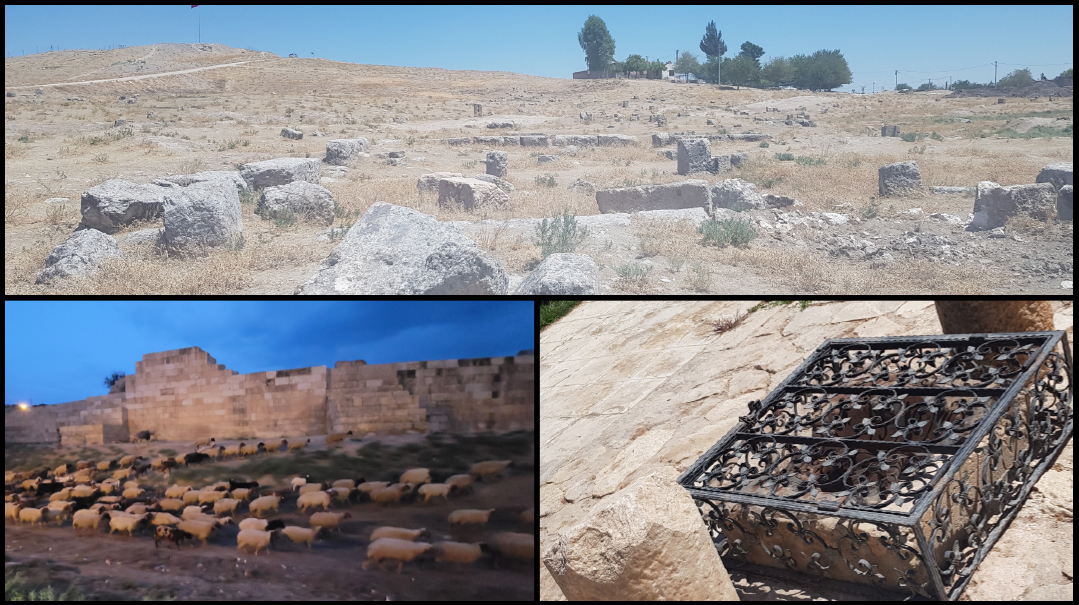
A Square Mile of Charan
Perhaps the most noteworthy stop was in the dusty southern Turkish town of Charan, where Avraham lived, and where Rivka, Rachel, and Leah, Bilha and Zilpah, and most of the Shevatim, were born and raised. A nondescript sign reading “Harran” heralds that shining city upon a hill, claiming a population of some 8,500. A little more than a square mile, that little hill is definitely the beating heart of global antiquity.
“You feel connected to this place,” Rabbi Chitrik says. “You feel that you come from here, right? That’s where we started. Think about it — 11 of the 12 Shevatim were born right there on that hill.”
Outside Charan, bordered by a short rock frame, lies what city elders claim is the well where Yaakov met Rachel. The well is no longer covered by a large stone, but sealed by an iron grate. A plaque written in Turkish, Arabic, and a broken English that Google would have done a better job translating, named it the “Well of Jacob Prophet,” citing a hopscotch of travelers’ sources for validation.
“Some Assyrian sources,” the plaque says in a translation of the Turkish language’s spiraling sentence structure, “Prophet Jacob meets Rachel talismanic stone is believed to be well removed and this stone is kept Abraham monastery in Harran it is believed that.” It adds that due to the province’s environmental agency’s work, “Jacob’s Well will be transferred to future generations as cultural heritage protected and without lost.”
One interesting thing about the language is that four of Turkey’s months have names that might sound familiar (our own Hebrew months were named in Bavel) — April is Nisan, July is Temmuz, February is Subat, and September is Elyul.
“So you can’t cry ‘Elul’ on the streets of Turkey?” I ask him.
“Right, because it might already be Rosh Hashanah!” he responded.
Eerily, as Rabbi Chitrik was standing there, a shepherd passed through, herding a flock of sheep with him. He told me that he thought to himself, “Wow, let me see how many of the sheep are nekudim, akudim, and berudim.”
Istanbul —known as Constantinople under the Byzantines and Ottomans — was called Kushta in Jewish sources. Rabbi Chitrik jokes that he is probably the only man in the world who keeps his promise laid out in his kesubah to be “zan u’mefarnes es nesheihem b’kushta” (the literal translation being that husbands vow to support their wives with honesty.)
Rabbi Chitrik has no known lineage in Turkey, although he takes pride in being descended from Rav Naftali Katz, the Semichas Chachamim, the rav of Frankfurt who was on his way to Eretz Yisrael when he passed away on the journey in Istanbul, where he’s buried.
But from Istanbul to Charan is quite a journey, and even his medium of getting the story out — Twitter — is new to him. It all started a few months ago, and was inspired by his maternal grandfather, Rav David Moshe Lieberman, the chief rabbi of Antwerp. A spry 97, he is blind and spends his days absorbed in his seforim.
“He has chavrusas from morning until night, and all he does is learn, learn, learn,” Rabbi Chitrik says. “That’s his life. During a visit there a couple of months ago, I decided to document what he does and to share it with my family and others. And I saw that this type of storytelling sells. I walked through the street of Antwerp on Shabbos, and all of a sudden everyone knew who I was. So I decided that I could do the same here, and tell the story of Turkish Jewry.”
Rabbi Chitrik says he has three audiences for his storytelling: He wants the Turkish Jewish community to be able to reconnect to their past, the worldwide Jewish community to know that Turkey was once a metropolis of Yiddishkeit, and the Muslim community to know that Jews were in Turkey for as long as they were.
“I want the Muslim community in Turkey to know that Jews are part of this region,” Rabbi Chitrick told me during a Zoom meeting as he was passing through the city of Edirne, known to Jews as Adrianople, where Rav Yosef Karo started writing the Shulchan Aruch. “They’ve always been here, will always be here, and they’re an integral part of the region. Jews are not guests in this country.”
Indeed, one imam told this to Rabbi Chirtik as they toured the ancient ruins of Sardis that was first settled by Jews during the First Beis Hamikdash. “I didn’t realize that Jews were here for so long,” the imam said.
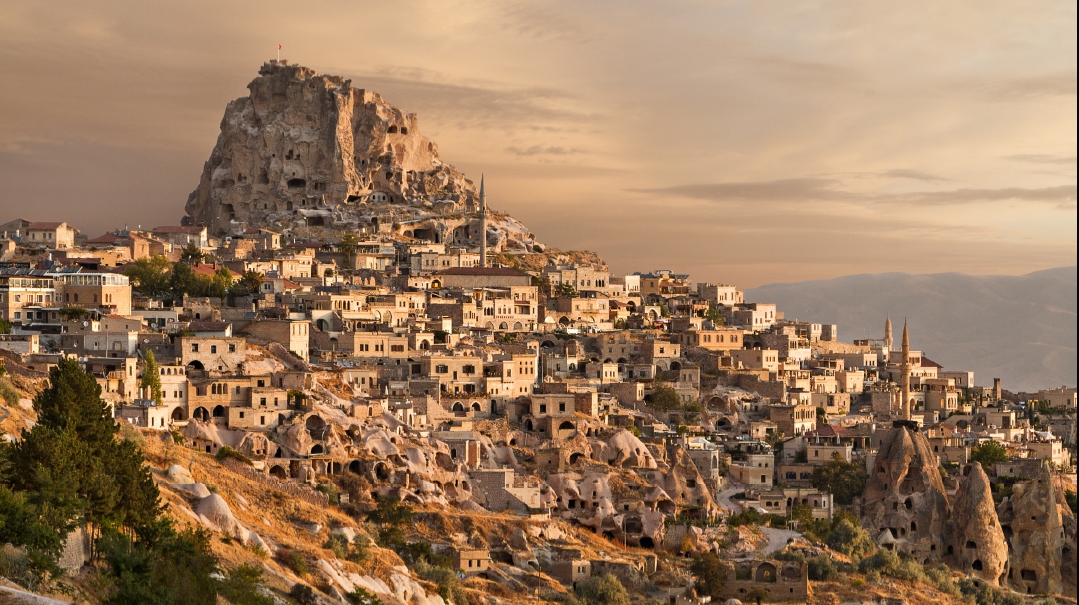
Back in Time
Turkey is a sprawling country that encompasses the lands once ruled by many ancient empires, from the Seleucid Greeks in the west (think Chanukah) to Assyria in the east, whose emperor carted off the Ten Shevatim to Destination Unknown. Its southern tip becomes the northern point of the empire of Aram Naharayim — the “Aram between the two rivers,” the Chidekel and Peras, the Tigris and Euphrates.
Ancient nomads followed the water, and two rivers were a double blessing, which is why this area, known as the Fertile Crescent, became the cradle of civilization. Until today, farmers dig canals from the two rivers to their own fields to irrigate them.
The Gemara writes that Rabi Akiva and Rabi Meir visited Turkey, and the latter even passed away there and was brought to Teveria for burial. Rabi Yehudah ben Beseira lived in Netzivin, the town of Nusaybin, which boasted an ancient Jewish community that existed until recent years. The Gemara recounts how a non-Jewish traveler passed through Netzivin, which is just north of the Syrian-Iraqi border, and bragged to Rabi Yehudah that he dressed like a Jew and was given a portion of the Korban Pesach each year — which carries the death penalty.
“Do they give you the tail?” Rabi Yehuda asked him, referring to a part of the korban that must be burned on the Mizbeiach. “You know, that’s the best part of the animal.”
The next year, when the gentile sat down for the Korban Pesach in Jerusalem, he demanded the tail. This alerted the chachamim, and the gentile’s true identity was ultimately discovered.
“Peace unto you, Rabi Yehudah ben Beseira,” they sent him in a message, “that you are in Netzivin and your net is spread all the way to Yerushalayim.”
Then there is the western city of Lydia. The Gemara says that the “Luddim” eat breakfast in the first hour of the day, since they are cannibals. This is commonly thought to be Lydia, although Rabbi Chitrik notes that there are four other towns with similar names, including one called Laodicea, which is what’s usually meant when the Gemara refers to “Lod.”
Next to Lydia is Mezget Keyseri, which is mentioned in the Gemara in Moed Katan as the site of a bloodbath. Shappur Malka, the king of Persia, killed 12,000 Jews there who supported the Romans in their battles against him. Shappur was friends with Shmuel, who didn’t mourn the Jews since “they brought it on themselves” by siding with the Roman enemy.
In Cappadocia, located in the Turkish heartland and one of the country’s major tourist attractions due to its cave cities and unusual geological structures, the Gemara in Shabbos says that Rabi Nassan Habavli once visited — presumably on his way from Bavel to Eretz Yisrael — and was asked to perform a bris on a child whose two older brothers died after their brissim from excessive bleeding. He examined the baby and saw that he was jaundiced, and told the parents to wait a few days. Ever since, Jews do not circumcise babies that are “yellow.”
Another impact Cappadocia has on Jewish life is the Gemara’s discussion over a proposed decree that Shabbos candles be made exclusively from olive oil. “But what should the people of Cappadocia do,” the Gemara asks, “that they only have paraffin?” Indeed, most candles used in Jewish households today are made from paraffin. Rabbi Chitrik himself had a measure of satisfaction when he spent a Shabbos in Cappadocia last year and used Shabbos candles made from paraffin.
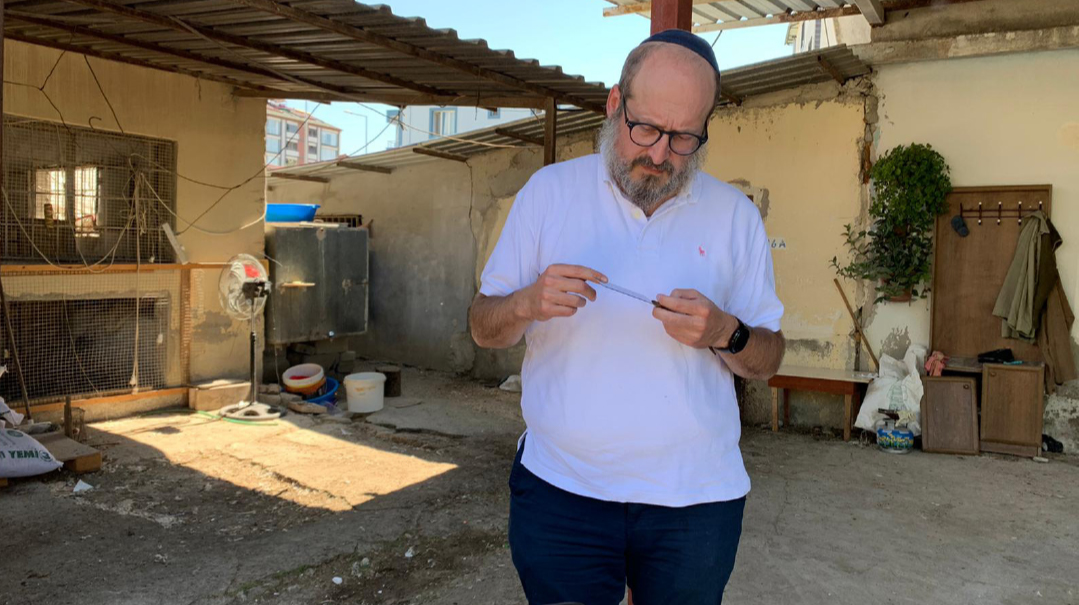
Mamme Loshen
Turkey’s modern Jewish community is small, and recently lost some remaining members due to Spain’s offering citizenship to anyone who can prove their ancestors were expelled 500 years ago. There are about 15,000 Jews overall in the country, but most of them are not religious. Before Covid sent everyone into their homes, there were about 500 people who attended daily minyanim, and between 1,000 and 1,500 who came to davening on Shabbos. Most of Turkey’s Jews live in Istanbul, but even the capital, Ankara, has three or four minyanim, and there are another handful sprinkled around the rest of the country.
In the town of Adiyaman, Rabbi Chitrik met Gregory, an Armenian metropolitan — the equivalent of a religious leader — and had a conversation in ancient Aramaic.
“It was very interesting since to me this is the language of Yekum Purkan and Chad Gadya,” Rabbi Chitrik laughed. “He told me good night like this: ‘Ana aramaah, shadarna shlama l’achana dilan. Leila nicha.’”
To any Gemara learner, this is easily translatable: “I am from Aram, and I send greetings to our brothers. Have a comfortable night.”
Gregory never heard of Chad Gadya but was able to follow along when Rabbi Chitrik recited Yekum Purkan, literally “May salvation arise.” He often meets the descendants of Eisav and Yishmael, Rabbi Chitrik says, but “meeting a descendent of Lavan — that was an experience.”
Rabbi Chitrik’s travels have not exactly gone viral, but have been attracting enough attention for him to get pleas on Twitter for a visit. That’s how he wound up paying a quick visit to the town of Diyarbakır, famed for the legend that Eliyahu Hanavi was there. Today only one Jew remains. And although he debated making the two-hour trip, he was glad he did. Rabbi Chitrik put tefillin on that Jew, spoke to him for an hour, and then left.
He insists that there is no anti-Semitism in Turkey — he has never had a bigoted moment in his home city of Istanbul or encountered any hate during his travels. Despite the Erdogan government’s hateful rhetoric aimed at Israel, Rabbi Chitrik says that it doesn’t spill over into local Jew hatred. During his month of travel, he’s been helped by imams and locals, and in Kilis, a town near the Syrian border, he was invited by the governor of the province, Recep Soyturk, to what turned out to be a two-hour conversation on religion and life. One imam even arranged to have an old Jewish cemetery completely renovated for his arrival, begging the rabbi not to post pictures of it pre-renovation.
He received only one negative reaction on Twitter, by Huseyin Hakki Kahveci, a nationalist author and independent journalist. Kahveci posted “important for intelligence” that Rabbi Chitrik’s travels “overlapped” with places with the spate of forest fires that have been cropping up. “The footprints on the map of Turkey and the fires are almost the same,” he claimed. “Rabbis know Kabbalah and black magic well,” he added.
Kahveci later posted that he was taken in by police for questioning but subsequently released.
Another day, another stop. In Antioch — called Antakya in Turkish — he met the last 14 Jews remaining from a kehillah that thousands of years ago was the jewel of the Torah world. Antioch was also the capital city of the Seleucid Empire (the name Antiochus, the generic name for the emperors, comes from that).
One of the last Jews in the city is Azur Cenudioglu, who claims his family has been living there since the days of antiquity. “We have been here for 2,300 years,” Cenedioglu told Rabbi Chitrik. There is no minyan in Antioch so Azur listens live to a shul in Jerusalem, answering “chazak u’baruch” to his iPhone as the baal korei finishes the leining.
“I’m not that religious,” Azur explained apologetically to Rabbi Chitrik, “but I try to keep whatever I can — I pray three times a day, keep Shabbos, put on tefillin, say Tehillim every day, keep kosher.”
“I gave him a hug and told him, ‘We need more nonreligious people like you in the world,’” Rabbi Chitrik relates.
The Jews there are uneducated, but would not think of eating nonkosher food. Yet when Rabbi Chitrik — who is also a shochet and a mohel — was there about six months ago, he forgot to bring along his shechitah knife.
“Rabbi,” one of the housewives, Olga Cemal, a cousin of Azur’s, phoned him before he set out of his current trip, “don’t forget to pack a shechitah knife. We haven’t eaten meat or chicken in six months.”
As Rabbi Chitrik and his son Eliezer wind down their road trip, he notes that this has drawn much more exposure than he thought it would.
“I’ve had people writing to me that they would want to join me next time. Many people wanted to visit Charan,” he pondered. “Nu, maybe for next year.”
(Originally featured in Mishpacha, Issue 874)
Oops! We could not locate your form.

